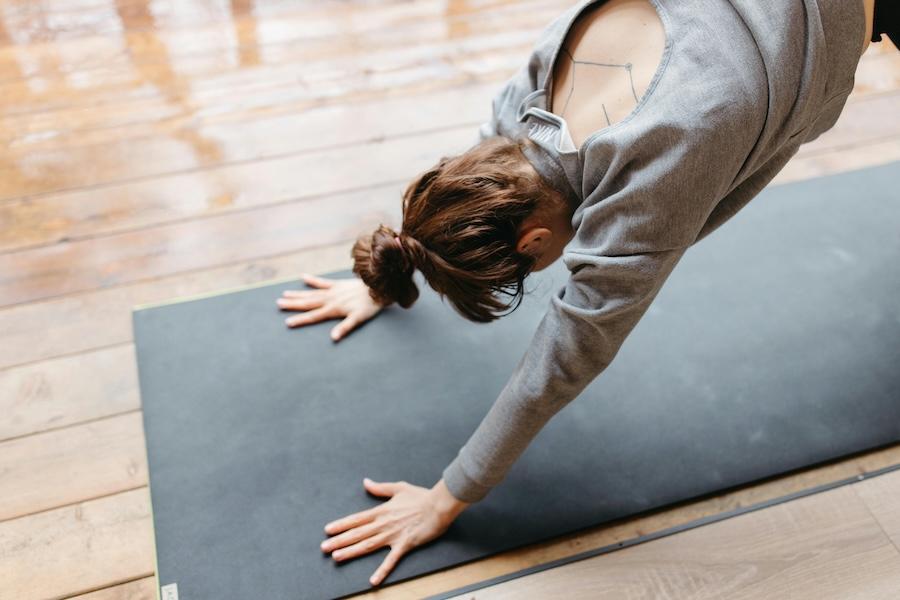During the pregnancy the muscles in the pelvic floor are put under more pressure than normally. At the moment of birth the muscles around the region are stretched out by over 300%. It’s very common to get smaller ruptures, especially during your first pregnancy. Common symptoms after birth include pain, swellings, urine leakage, feeling heavy and having difficulty with finding the clench.
Exercise during the first week
The first phase of the healing process is often called “the emergency phase” and describes the first week after birth. During this time swellings and pain in the stomach is very common. As soon as the pain decreases to a manageable level, you may begin with identifying your pelvic floor.
During the first weeks it’s enough to do light and short clenches to increase the circulation to the pelvic floor and to stimulate the recovery. Try to keep the clenches with a light or middle force for about 2 seconds and repeat 5 to 10 times, 3 times a day. Make sure to release your grip completely between the clenches.
Exercise during the second to eighth week
The second phase is called the “reparation phase” and goes for up to 6 weeks. If you got a rupture it is now the scar begins to form. After a couple of weeks, when the identification clench feels too light, you can begin with strength clenches, whis has the same technique as with the identification clench but with a force that shall remain in 5-8 seconds and be repeated 5-10 times. You can do this three times a day and it shouldn’t lead to any pain.
It takes about 6-8 weeks for the uterus to regain its normal size and for some the rejection bleeding (lochia rubra) lasts just as long. Therefore it is recommended to not push your body heavily during the first two months. Besides training of the pelvic floor it may be beneficial to start taking extended walks during this phase. If your body feels ready, you can also begin doing exercises which activate the stomach, thighs, back, legs and arms - All exercises which you are comfortable to perform and don’t give rise to new symptoms.
Exercise from the eighth week to a year
The third phase can be considered to be the recovery phase. If you have any scars they successively become stronger and stronger. This phase goes on for up to a year after the pregnancy. The purpose of the training is now to slowly but surely rebuild the strength of your body in your daily life and increase the level of your training with the goal to return to ordinary activity. You can during this phase also add endurance clenches of the pelvic floor. This means that you with a reasonable force keep the clench for 20-60 seconds and repeat 1-2 times. You should keep your daily pelvic floor training for around 6 months.
After 12 weeks studies show that the tissues have regained 80% of their original capacity. Therefore it may be a good idea to wait at least 3 months before you can go back to jogging, jumping exercises and heavy lifting which put your stomach under high pressure. It is also very essential to listen to your body as the recovery spans over the entire first year. Training shall not increase or cause symptoms. If the training does that, then it’s simply too heavy and you would need to decrease the level and go back one step or two.
If something doesn’t feel good when you exercise
We all have different bodies so it is impossible to give general advice which applies to all individuals. Your earlier training habits, your well being and activity during pregnancy, how it went when you gave birth and your genetics are just some factors playing a role as to how your body will feel after the pregnancy and how it reacts to exercising. It’s therefore important to seek help if you experience something that doesn't feel good. If you have issues or you feel unsafe, don’t hesitate to contact your midwife or physiotherapist for help with an inspection of your pelvic floor musculature as they have competence within the healthcare of women.
Source:
- Lind, Rotstein, Fernando, Olsson. Gothia fortbildning 2020. Bäckenbotten och förlossningsskador - Handbok för barnmorskor
- Fysisk aktivitet i sjukdomsprevention och sjukdomsbehandling-FYSS 2021. YFA. Rekommendationer om fysisk aktivitet och stillasittande under och efter graviditet.
- Bäckenbottenutbildning med ursprung i ”Säker förlossningsvård” 2021. backenbottenutbildning.se
- Goom et al. 2019. Returning to running postnatal - guideline for medical, health and fitness professionals managing this population.
